Cat Fence Height Guide for Large Rural Australian Blocks: Securing Your Property Down Under

- Minimum recommended fence height for cat containment in Australia is 1.83 metres
- Oscillot's cat-proof fence systems are 100% Australian made and owned
- Rural properties require comprehensive perimeter protection with specialized kits
- Proper installation is crucial for effectiveness on large rural blocks
- Cat containment protects both your pets and Australia's unique native wildlife
Introduction to Cat Containment in Rural Australia
Australia's unique wildlife faces big threats from roaming cats, both domestic and feral. For rural property owners, containing cats is both a responsibility and a challenge because country blocks are so large. With big perimeters to secure and different types of land, rural Australian properties need special cat containment solutions that work well for the landscapes found across the country. Research shows that free-roaming cats harm native species, making proper containment important not just for pet safety but also for protecting the environment.
As a leading provider of cat containment solutions, Oscillot has developed special systems made for Australian conditions. Our 100% Australian made and owned cat-proof fence systems offer an effective solution for rural property owners who want to keep their cats safe while protecting local wildlife. Each system is built to handle the harsh Australian climate, from hot summers to unpredictable weather, ensuring they last a long time even in tough environments.
The challenge of containing cats on rural properties is more than just putting up a fence. Australia's diverse landscapes, from bush to coastal areas, need containment systems that can work on different terrains and stand up to harsh weather. This guide will help rural Australian property owners understand the height requirements and containment solutions needed for their specific situations. Whether you have a small rural homestead or a large farm, effective cat containment needs careful planning for your specific property and environment.
Why Cat Containment Matters in Rural Australia
Australia's native wildlife is very vulnerable to cats hunting them. In rural areas, where native species often live, roaming cats can cause serious harm. Studies show that even well-fed pet cats will hunt and kill native animals when allowed to roam freely. Research by the Australian Wildlife Conservancy shows that feral and domestic cats kill more than 2 billion reptiles, birds, and mammals every year across Australia, putting huge pressure on already threatened native species. This hunting is especially concerning in rural areas where there are more different types of animals that can be easily harmed.
For cat owners, containment also provides significant benefits:
- Protection from road accidents, which are common on rural roads where vehicles often travel at high speeds with limited visibility
- Prevention of fights with other cats or wildlife, reducing the risk of injuries, infections, and disease transmission
- Reduced exposure to diseases and parasites prevalent in the Australian bush, including ticks, fleas, and various bacterial and viral infections
- Peace of mind knowing your pet is safe on your property, eliminating the anxiety of wondering where your cat might be or if it will return home
Oscillot's plastic cat-proof fence kits provide an effective solution that keeps cats contained without cages or electric shocks, allowing them to enjoy the outdoors safely within the boundaries of your property. These systems are designed with both animal welfare and environmental protection in mind, offering a humane solution that satisfies the natural curiosity and exercise needs of cats while preventing them from hunting native wildlife or exposing themselves to the numerous hazards present in rural Australian environments.
Minimum Fence Height Requirements for Australian Rural Properties
For containing cats on rural Australian properties, fence height is really important. Cats are great jumpers and climbers and can easily get over normal fences. For effective containment, especially in rural areas where cats want to explore more, the minimum recommended fence height is 1.83 metres (6 feet). This recommendation comes from lots of research about how cats behave and what they can do physically, taking into account how high cats can jump plus extra height to make sure they can't escape. In rural areas where there's lots of wildlife that cats want to hunt, this minimum height becomes even more important.
This height requirement is for the base fence itself, before adding any cat containment system. Our Oscillot 180 Metre Cat-Proof Fence Kit and Oscillot 200 Metre Cat-Proof Fence Kit are made specifically for large rural properties, and both systems need a minimum fence height of 1.83 metres to work properly. These kits cover large areas, making them perfect solutions for bigger rural blocks where you need containment around extensive boundary lines, often covering several acres or more of property.
Key considerations for rural fence height include:
- Local wildlife presence - areas with abundant wildlife may require taller fences as cats will be more motivated to hunt, particularly in regions with high bird or small mammal populations
- Terrain variations - sloping ground may effectively reduce fence height in certain sections, requiring adjustments to maintain consistent containment effectiveness across the entire perimeter
- Adjacent structures - trees, sheds, or other structures near fences can provide launching points for cats, necessitating either increased fence height or removal of these potential escape routes
- Weather conditions - areas prone to snow accumulation may need taller fences to maintain effective height year-round, while properties in high-wind regions may require additional reinforcement
Expert Tip:
For rural properties with existing fences below 1.83 metres, consider raising the fence height before installing a cat containment system. This initial investment will significantly improve the effectiveness of your containment solution. Extension panels can often be added to existing fence structures, providing a cost-effective way to achieve the necessary height without completely replacing your current fencing.
Oscillot's Large-Scale Solutions for Rural Australian Properties
Rural Australian properties have special challenges for cat containment because of their big perimeters. Oscillot offers special large-scale solutions designed for these situations, with kits ranging from 60 metres up to 200 metres to fit properties of different sizes. These systems are built with the specific challenges of rural Australian properties in mind, including consideration for the different fence types often found on country properties, from traditional post-and-rail to modern Colorbond and chain-link varieties. Our systems can be adjusted to fit almost any existing fence setup.
Our larger kits include:
- 100 Metre DIY Cat-Proof Fence Kit - Includes 50 paddles and 64 dual knuckle post kits, perfect for medium-sized rural properties with moderate perimeter requirements
- 160 Metre Cat-Proof Fence Kit - Features 132 paddles and 148 dual knuckle post kits for larger properties with extensive boundary lines
- 180 Metre Cat-Proof Fence Kit - Our comprehensive solution with 148 paddles and 166 dual knuckle post kits, designed for substantial rural properties
- 200 Metre Cat-Proof Fence Kit - Our largest system with 160 paddles and 180 dual knuckle post kits for extensive rural boundaries, ideal for large homesteads or farming properties
Each kit comes with our innovative paddle system that prevents cats from climbing over fences. The paddles are 1.2 metres in length and are designed to spin when cats attempt to climb, causing them to slide back down safely. This humane solution requires no electricity, netting, or cages, making it ideal for rural Australian properties where aesthetic considerations are often important. The system's design also minimizes maintenance requirements, a crucial factor for rural property owners who may have extensive land management responsibilities already. The UV-stabilized materials used in our products ensure longevity even under the harsh Australian sun, providing years of reliable performance with minimal upkeep.
How Oscillot's System Works on Australian Rural Fences
The Oscillot cat containment system works through a simple but clever mechanism that's particularly good for Australian rural properties. The system has specially designed paddles that attach to the top of existing fences, creating a barrier that cats cannot climb over. The design of this system is based on lots of research into how cats behave and what they can physically do, targeting the specific ways cats try to climb fences and preventing these climbing techniques without hurting or upsetting the cat.
When installed on fences of at least 1.83 metres in height, the system works through these key mechanisms:
- The paddles are mounted on dual knuckle posts attached to the top of the fence, creating a rotating barrier that extends outward at a specific angle designed to maximize effectiveness
- When a cat attempts to climb the fence and reaches the paddles, the paddles rotate on their axis, creating an unstable surface that prevents the cat from establishing grip or balance
- This rotation prevents the cat from getting a secure grip, causing them to slide back down to the ground safely without injury or trauma
- The cat quickly learns that the fence cannot be climbed, discouraging future attempts and establishing a clear boundary within which they can safely enjoy outdoor access
The system is particularly well-suited to Australian rural properties because:
It stands up to harsh Australian weather conditions, from intense sun to heavy rain, with materials specifically chosen for their durability in extreme environments. The UV-resistant materials ensure longevity even in areas with high sun exposure, preventing degradation, warping, or color fading over time. The design works with various fence types common on rural properties, including timber, metal, wire mesh, and composite materials. The system works effectively with both straight and corner fence sections, adapting to the irregular boundaries often found on rural properties.
Our comprehensive installation guide provides detailed instructions for setting up the system on rural properties, taking into account the specific challenges of larger perimeters and varying terrain. The guide includes specialized techniques for dealing with common rural fencing scenarios, including gates, corners, and transitions between different fence types that are frequently encountered on country properties.
Installation Considerations for Large Rural Australian Properties
Installing a cat containment system on a large rural Australian property requires careful planning and thinking about several factors unique to these environments. How well your cat containment system works depends largely on proper installation tailored to your specific property conditions. Rural properties have distinct challenges not typically found in urban or suburban settings, including extensive perimeters, varied terrain, wildlife pressure, and exposure to extreme weather events. Addressing these factors during the planning and installation phases is essential for creating an effective, durable containment solution.
DIY vs. Professional Installation
For rural properties with extensive perimeters, you have two options:
- DIY Installation: Our 70 Metre DIY Kit and 100 Metre DIY Cat-Proof Fence Kit are designed for self-installation, with comprehensive instructions provided. This option is cost-effective for those with basic DIY skills and time to complete the project. The modular nature of our system makes installation straightforward, though larger properties will require more time and planning. Many rural property owners appreciate the hands-on approach, as it allows them to thoroughly understand the system and make adjustments specific to their unique property features.
- Professional Installation: For larger properties or those with challenging terrain, professional installation may be preferable. Our installer network includes experienced professionals throughout Australia who understand the specific requirements of rural properties. Professional installers bring specialized tools and expertise that can significantly reduce installation time and ensure optimal system performance, particularly valuable for properties with complex boundaries or difficult access points. They can also provide valuable advice on integrating the system with existing farm infrastructure.
Key Installation Considerations for Rural Properties
Rural properties often have uneven terrain that can create gaps under fences. These need to be addressed to prevent cats from escaping underneath. Comprehensive site assessment before installation is crucial, identifying low spots, erosion-prone areas, and sections where wildlife might damage fencing. Solutions may include burying mesh barriers, installing ground-level deterrents, or creating physical barriers to prevent cats from exploiting these vulnerabilities.
Farm gates and access points require special attention to ensure the containment system remains effective while maintaining functionality. Specialized mounting brackets and modified paddle configurations may be necessary to accommodate different gate types while preserving ease of operation for vehicles and equipment. Gates used frequently for farm operations need particularly durable solutions that can withstand repeated opening and closing.
Areas with high wildlife activity may require reinforced installation to withstand potential damage from larger animals common in rural Australia. This might include additional bracing, heavier-duty mounting hardware, or protective barriers to prevent damage from kangaroos, wallabies, or other large native animals that might interact with the fence line. Consideration should also be given to preventing wildlife entrapment or injury.
Installation in areas exposed to extreme weather conditions (cyclone regions, flood-prone areas) may require additional reinforcement. This could include deeper post embedment, stronger mounting hardware, or strategic placement to minimize exposure to prevailing winds. For areas prone to bushfires, maintaining clear vegetation zones around fence lines is also essential for system protection.
Ensure installation doesn't impede necessary access for farm equipment or livestock movement. Strategic planning of containment zones should account for operational requirements, potentially incorporating specialized gates or access points designed for specific farm activities while maintaining cat containment integrity.
Rural Installation Tip:
For very large rural properties, consider prioritizing containment for a smaller section initially, such as the area immediately surrounding your home, before expanding to the entire property perimeter. This phased approach can be more manageable and allows cats to adjust gradually. Creating a "home zone" containment area of 1-2 acres around your main residence provides a practical starting point, allowing you to monitor effectiveness before investing in perimeter-wide installation. This approach also helps cats adapt to boundaries in a less overwhelming way.
Adapting Fence Height for Different Australian Landscapes
Australia's diverse landscapes present unique challenges for cat containment. From the rugged terrain of the outback to coastal properties and bushland settings, each environment requires specific adaptations to ensure effective cat containment. The standard 1.83-metre minimum fence height recommendation may need adjustment based on your property's specific landscape features, local wildlife populations, and environmental conditions. Understanding how these factors interact with containment systems is essential for creating an effective solution tailored to your particular rural setting.
Bushland Properties
Properties bordered by Australian bush present specific challenges:
Consider exceeding the minimum 1.83-metre height where native trees are close to fence lines, as they can provide launching points for cats. In densely wooded areas, cats may use overhanging branches to bypass standard height fences, potentially needing heights of 2 meters or more in strategic locations. Also, consider the vertical clearance between tree branches and your fence line, aiming for at least 2 meters of separation to prevent cats from jumping from trees to fence tops.
More frequent inspection for damage from falling branches or wildlife interference is essential in bushland settings. The natural debris common in these environments can create unexpected access points or damage containment systems if not regularly monitored and cleared. Seasonal inspections after storms or high wind events are particularly important to identify and address potential compromises to the system.
In bushfire-prone areas, ensure fence materials meet local fire safety regulations and incorporate appropriate firebreaks around fence lines. Our plastic components are designed to minimize fire propagation risk compared to some alternative materials, though maintaining cleared zones around the perimeter remains an important safety measure for both your containment system and broader property protection.
Coastal Properties
For rural properties in coastal regions of Australia:
Our plastic cat-proof fence kits are ideal for coastal areas as they resist salt corrosion that would quickly degrade metal alternatives. The non-metallic components maintain their structural integrity and functionality even in high-salt environments where traditional containment systems might fail within months of installation. This corrosion resistance means much lower maintenance requirements and longer system lifespan.
Additional reinforcement may be needed in areas exposed to strong coastal winds, which can place substantial stress on fence-mounted components. Consider wind direction and exposure when planning installation, potentially increasing post frequency or using heavier-duty mounting hardware in particularly exposed sections. For properties in cyclone-prone northern coastal regions, specialized high-wind installation techniques may be necessary.
Regular clearing of sand buildup that might reduce effective fence height is crucial in coastal settings. Wind-blown sand can accumulate against fence lines, gradually reducing the effective height and potentially creating climbing access for cats. Incorporating design elements that minimize sand accumulation or facilitate easy clearing can significantly reduce maintenance requirements over time.
Outback Properties
For properties in Australia's outback regions:
Allow for material expansion in extreme heat when installing components in arid regions where temperatures can fluctuate dramatically. Proper spacing between components prevents buckling or warping during thermal expansion cycles, ensuring long-term structural integrity. Installation during cooler morning hours can also help minimize immediate expansion issues during the installation process.
Our systems are designed with UV-resistant materials to withstand harsh Australian sun, particularly important in outback regions where solar radiation levels are among the highest globally. The specialized polymers used in our components resist degradation, color fading, and brittleness that would affect both looks and functionality in lesser-quality alternatives not specifically engineered for Australian conditions.
Regular maintenance to prevent dust buildup that might affect the paddle mechanism is essential in arid environments. Dust can get into moving parts, potentially reducing rotation effectiveness if allowed to accumulate over extended periods. Simple periodic cleaning with compressed air or water can maintain optimal performance even in the dustiest conditions.
Regional Adaptation Tip:
For properties in tropical northern Australia, consider scheduling installation during the dry season for optimal results, and ensure drainage channels are incorporated to prevent water damage during the wet season. The monsoonal climate in these regions creates unique challenges, with potential for water erosion around fence bases during heavy rainfall periods. Installing small drainage culverts or gravel-filled trenches at strategic points along the fence line can prevent undermining of posts and maintain system integrity throughout the wet season. Additionally, selecting installation points that avoid seasonal water flow paths can significantly reduce maintenance requirements.
Each of our cat-proof fence kits can be adapted to these specific Australian landscapes, with our team available to provide guidance on the best approach for your particular property conditions. Our extensive experience across diverse Australian environments allows us to offer tailored recommendations that address the unique challenges of your specific region, ensuring optimal performance regardless of your property's location or environmental conditions.
Dealing with Challenging Terrain on Australian Rural Properties
Rural Australian properties often have challenging terrain that can complicate cat containment efforts. From rocky outcrops to creek beds, gullies, and varying elevation changes, these landscape features require special consideration when installing cat-proof fencing. The diversity of Australian rural landscapes means that standard installation approaches may need significant modification to achieve effective containment. Understanding how to adapt containment systems to these challenging features is essential for creating a comprehensive solution that works across your entire property, regardless of terrain variations.
Solutions for Common Terrain Challenges
-
Uneven Ground and Slopes
- Use our adjustable dual knuckle post kits to maintain consistent paddle height despite ground elevation changes, ensuring effective containment even where fence height varies relative to ground level
- Install additional posts in steep sections to ensure stability and prevent sagging or misalignment that could compromise system effectiveness, particularly important in areas subject to soil movement or erosion
- Consider terracing extremely steep sections before installation to create more manageable installation surfaces and improve long-term stability of the containment system
-
Rocky Areas
- Pre-drill holes in rocky ground for post installation using specialized masonry bits or rock drilling equipment to prevent damage to components during installation
- Use concrete footings where traditional post installation isn't possible, creating stable mounting points even in areas with minimal soil or exposed bedrock
- Consider alternative mounting methods specific to rock surfaces, such as chemical anchoring systems or specialized brackets designed for irregular surfaces
-
Water Crossings and Creek Beds
- Install specialized crossing sections that allow water flow while preventing cat passage, potentially incorporating flood gates that permit water movement during high flow events while maintaining containment
- Consider seasonal water level changes when designing these sections, ensuring effectiveness during both dry periods and after heavy rainfall events
- Implement regular inspections after heavy rain events to identify and address any damage or debris accumulation that might compromise containment effectiveness
-
Dense Vegetation Areas
- Clear a maintenance path around the fence line to prevent vegetation interference with the system and facilitate regular inspections and maintenance
- Install additional height in areas where vegetation might provide climbing access, accounting for both current plant growth and future development of trees and shrubs
- Schedule regular trimming to prevent growth that could compromise the system, particularly important in Australia's high-growth regions where vegetation can quickly encroach on fence lines
Custom Solution Tip:
For extremely challenging terrain sections, consider creating a "containment zone" using a combination of natural barriers and strategic fencing rather than attempting to fence impossible areas. Our team can help design custom solutions for these situations. For example, steep cliff faces or large rock formations might serve as natural containment barriers when properly integrated with fenced sections. Similarly, dense, impenetrable native vegetation patches can sometimes be incorporated into the containment perimeter, reducing the need for fencing in particularly difficult areas while maintaining effective containment.
For properties with particularly challenging terrain, contact our expert team for personalized advice on adapting our systems to your specific situation. We've helped rural property owners across Australia implement effective cat containment solutions in even the most difficult landscapes. Our consultants can review property maps, satellite imagery, or on-site photos to provide tailored recommendations that address your unique terrain challenges, drawing on our extensive experience with diverse Australian rural properties from the Kimberley to Tasmania and everywhere in between.
Maintenance Requirements for Cat Fencing on Rural Australian Properties
Maintaining cat fencing on rural Australian properties has unique challenges due to exposure to harsh elements, wildlife interactions, and the extensive nature of larger properties. A well-maintained cat containment system ensures long-term effectiveness and protects your investment. Regular maintenance is particularly important in rural settings where environmental factors can speed up wear and damage to components. Developing a systematic maintenance schedule tailored to your specific property conditions will significantly extend the lifespan of your containment system while ensuring consistent performance throughout the year.
Seasonal Maintenance Schedule
Summer (December-February)
- Check for UV damage to components, particularly looking for any signs of discoloration, brittleness, or warping that might affect functionality
- Ensure bushfire preparedness by clearing vegetation around fence lines, creating defensible space that protects both your property and the containment system
- Inspect for damage from summer storms, including wind damage to paddles or mounting hardware and erosion around fence posts
- Check that heat expansion hasn't affected paddle rotation, adjusting spacing if necessary to maintain smooth operation during high temperature periods
Autumn (March-May)
- Clear fallen leaves and debris that might affect paddle movement, paying particular attention to corners and joints where material tends to accumulate
- Check for any pest infestations in fence components, including insects that might nest in hollow sections or rodents that might damage plastic components
- Inspect for damage from seasonal wildlife activity, particularly in areas where larger animals might interact with the fence during autumn migrations or feeding patterns
Winter (June-August)
- Check for water damage after heavy rainfall, including erosion around posts, water pooling that might affect components, or drainage issues that could undermine the fence
- Inspect for rust or corrosion in metal fence components, particularly in coastal areas or regions with high rainfall where moisture exposure is greatest
- Ensure drainage channels around the fence base are clear to prevent water accumulation that could lead to fence destabilization or create gaps under the fence
Spring (September-November)
- Complete a full system inspection as wildlife becomes more active, checking for any damage or interference from increased animal movement
- Check for new growth vegetation that might compromise the system, particularly fast-growing spring plants that could create climbing access or interfere with paddle movement
- Tighten any components that may have loosened due to seasonal temperature fluctuations or ground movement during winter months
Replacement Parts and Repairs
Our spare parts collection includes all components needed for maintenance and repairs, including:
- Replacement paddles for damaged sections, manufactured to the same specifications as original components to maintain system integrity
- Additional dual knuckle post kits for reinforcing sections or replacing damaged mounting points to ensure consistent performance
- Mounting hardware for repairs, including specialized fasteners designed for specific fence types common on rural properties
For rural properties, we recommend keeping a stock of essential spare parts on hand to quickly address any issues that arise, particularly important for remote properties where obtaining replacement parts might take time. Having a basic maintenance kit with common replacement components allows for immediate repairs when damage is identified, preventing temporary gaps in your containment system that cats might exploit. This proactive approach is especially valuable for properties located significant distances from major centers where shipping delays could leave your system compromised for extended periods.
Rural Maintenance Tip:
Create a digital map of your cat containment system with GPS coordinates marking potential weak points or areas requiring special attention. This can be invaluable for large properties where systematically checking the entire perimeter is time-consuming. Modern smartphone apps can easily record these locations during installation or initial inspections, creating a reference guide for future maintenance. This approach is particularly useful for properties with extensive perimeters or multiple staff members who might share maintenance responsibilities, ensuring consistent monitoring of critical points regardless of who performs the inspection.
Our systems are backed by a 3-year manufacturer's warranty, providing peace of mind for rural property owners making this significant investment in their cat's safety and local wildlife protection. This warranty covers manufacturing defects and premature component failure under normal use conditions, ensuring that your system remains effective without unexpected replacement costs. For specific warranty details or maintenance recommendations tailored to your property's unique conditions, our customer support team is available to provide guidance and assistance throughout the lifespan of your containment system.
Wildlife Considerations for Cat Containment in Rural Australia
Rural Australian properties are often home to diverse native wildlife, making effective cat containment not just a matter of pet safety but also of environmental responsibility. Understanding how your cat containment system interacts with local wildlife is essential for rural property owners. Australia's unique ecosystems harbor numerous threatened and endangered species that are particularly vulnerable to cat predation, with studies indicating that even well-fed domestic cats will hunt when allowed to roam. Effective containment systems play a crucial role in conservation efforts by preventing cats from accessing habitat areas where vulnerable native species live and breed.
Protecting Australian Native Wildlife
Australia has one of the highest rates of species extinction globally, with feral and roaming domestic cats contributing significantly to this problem. By containing your cats, you're helping protect:
- Small marsupials like bandicoots and potoroos, which are particularly vulnerable to cat predation due to their size and ground-dwelling habits
- Ground-dwelling birds such as quails and buttonquails, which nest on or near the ground and have limited defense against predators
- Reptiles including skinks and small lizards, which make up a significant portion of cats' hunting targets in rural areas
- Native rodents and other small mammals, many of which are already threatened by habitat loss and other environmental pressures
Our Oscillot cat-proof fence systems create a physical barrier that prevents cats from hunting these vulnerable species while still allowing wildlife to move freely through your property. Unlike some containment methods that might impede wildlife movement or create entanglement risks, our paddle system focuses specifically on preventing cats from climbing while minimizing impact on other species' mobility. This targeted approach supports ecosystem connectivity while addressing the specific threat posed by domestic cats.
Wildlife-Friendly Design Features
Oscillot's containment systems are designed with Australian wildlife in mind:
- Non-harmful Deterrent: The rotating paddle system gently prevents cats from climbing without posing a risk to other animals, using mechanical movement rather than harmful deterrents that might affect non-target species
- No Entanglement Risk: Unlike netting systems, our paddles don't create entanglement hazards for birds or flying mammals such as bats and gliders that might attempt to pass through or over the fence line
- No Electric Components: No shock risk to native animals that might contact the fence, eliminating the potential for unintended harm to wildlife that interact with the boundary
- Visible Design: The system is visible to larger animals, reducing collision risks for kangaroos, wallabies, and other macropods that might otherwise be injured by invisible barriers
Managing Wildlife Interactions with Your Fence
For rural Australian properties, consider these wildlife-specific recommendations:
- Install wildlife corridors in strategic locations where appropriate, allowing natural movement patterns for native species while maintaining cat containment
- Consider fence visibility for larger animals like kangaroos to prevent collisions, potentially using visual markers in areas of high wildlife activity
- Maintain vegetation clearance to reduce hiding spots for predators near fence lines, creating a buffer zone that increases visibility and reduces ambush opportunities
- Install the system at the recommended 1.83-metre height to allow passage for most native animals while containing cats, balancing containment effectiveness with wildlife mobility needs
Conservation Tip:
Consider installing wildlife cameras along your fence line to monitor both the effectiveness of your cat containment and document the native species benefiting from your conservation efforts. Many rural property owners report increased wildlife sightings after implementing effective cat containment. These cameras can provide valuable data on local species presence and behavior patterns, potentially contributing to broader conservation research while also providing personal satisfaction in seeing the positive impact of your containment efforts. Modern trail cameras with motion sensors and night vision capabilities are relatively affordable and can capture fascinating glimpses of nocturnal wildlife activity that might otherwise go unnoticed.
By choosing Oscillot's Australian-made cat containment solutions, you're supporting both responsible pet ownership and wildlife conservation on your rural property. Our systems represent a balance between allowing cats safe outdoor access while preventing the ecological damage caused by unrestricted roaming. This approach aligns with growing recognition among conservation authorities, veterinary professionals, and animal welfare organizations that responsible cat ownership in Australia necessarily includes effective containment, particularly in rural areas where wildlife impacts are most significant.






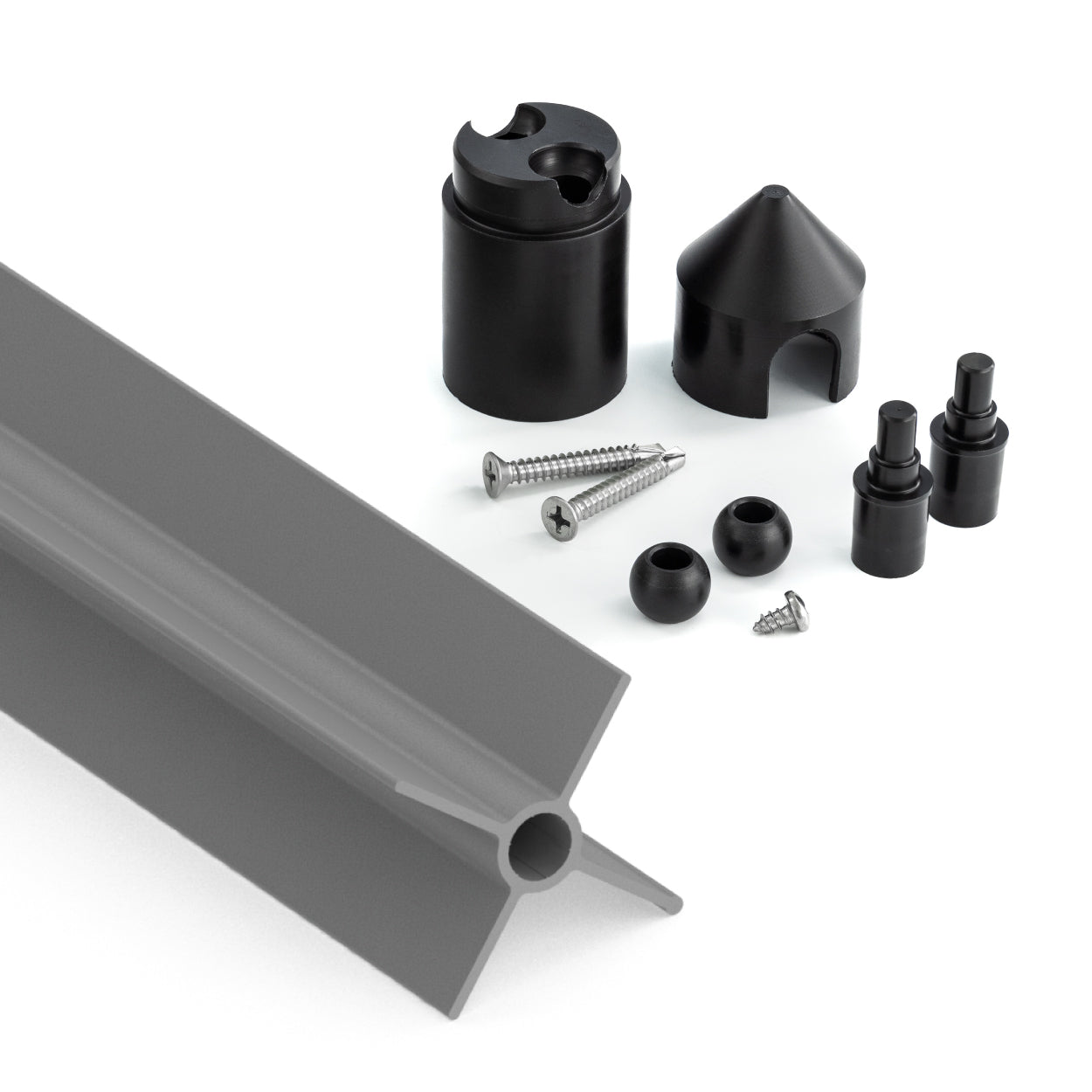
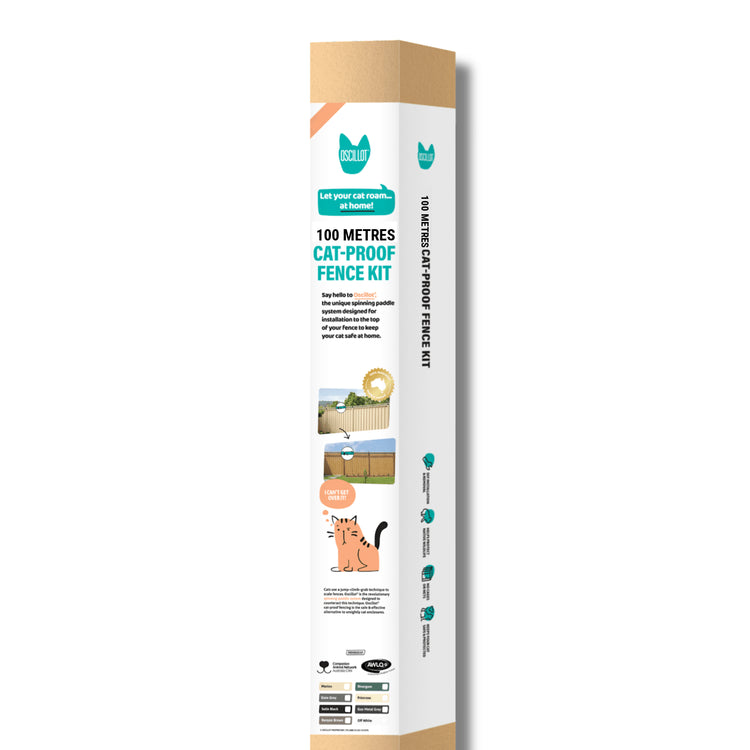
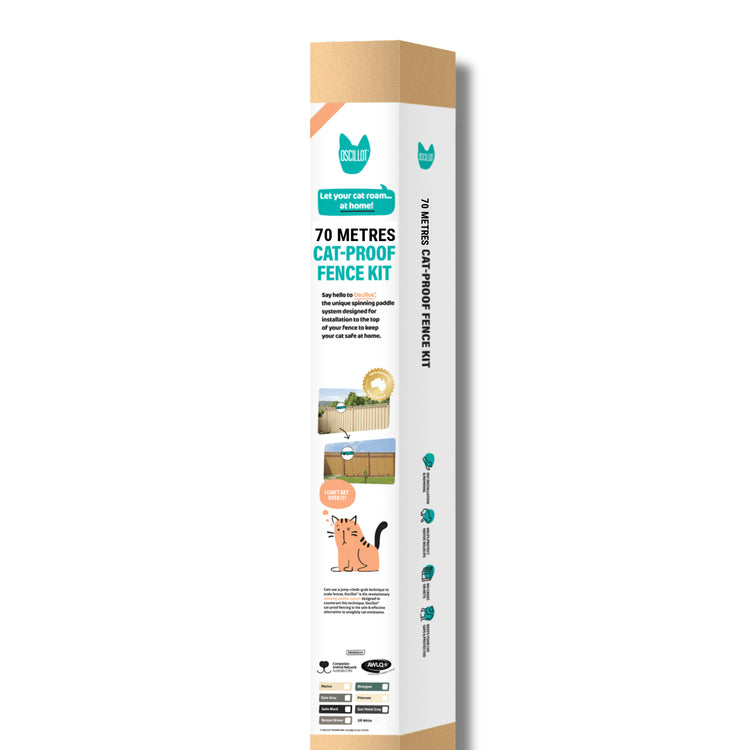
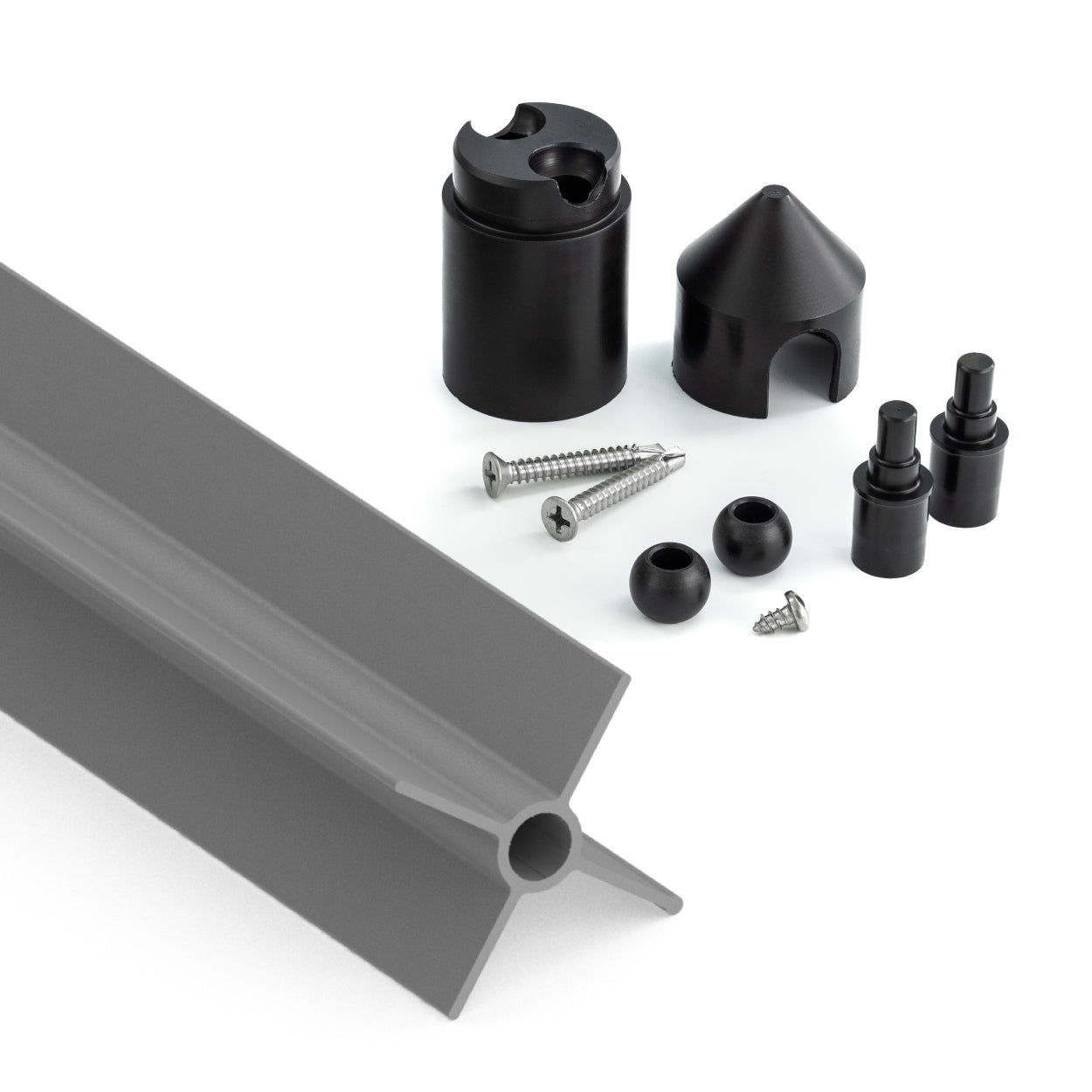
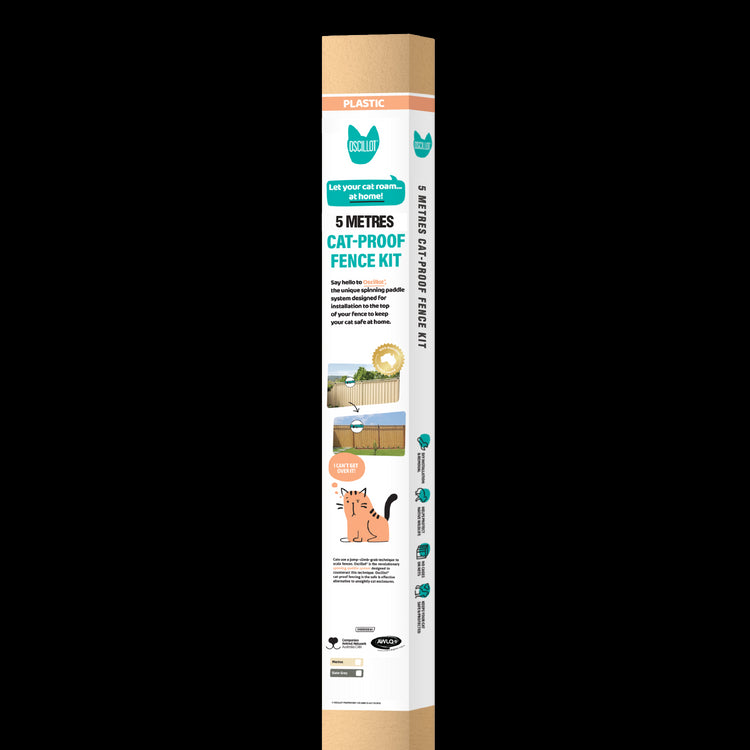



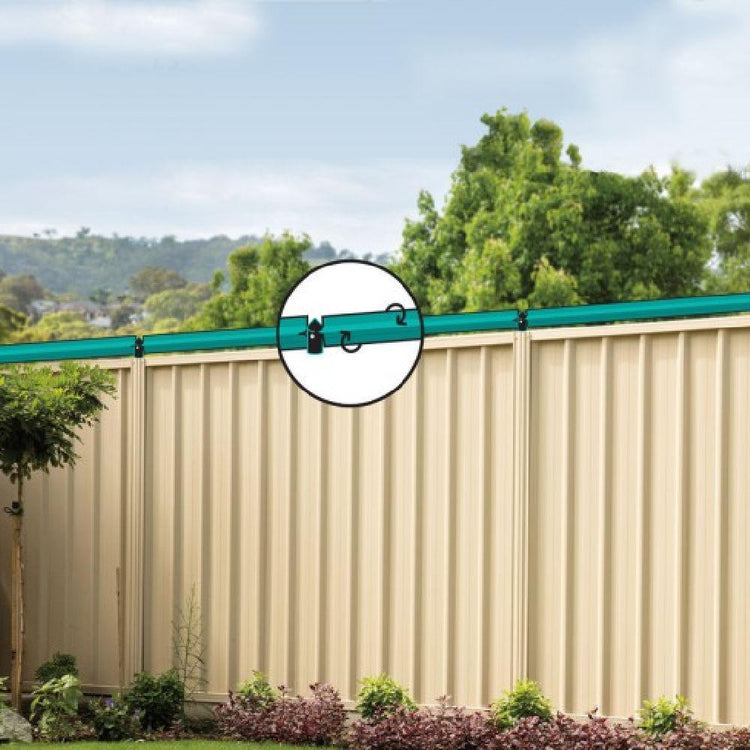
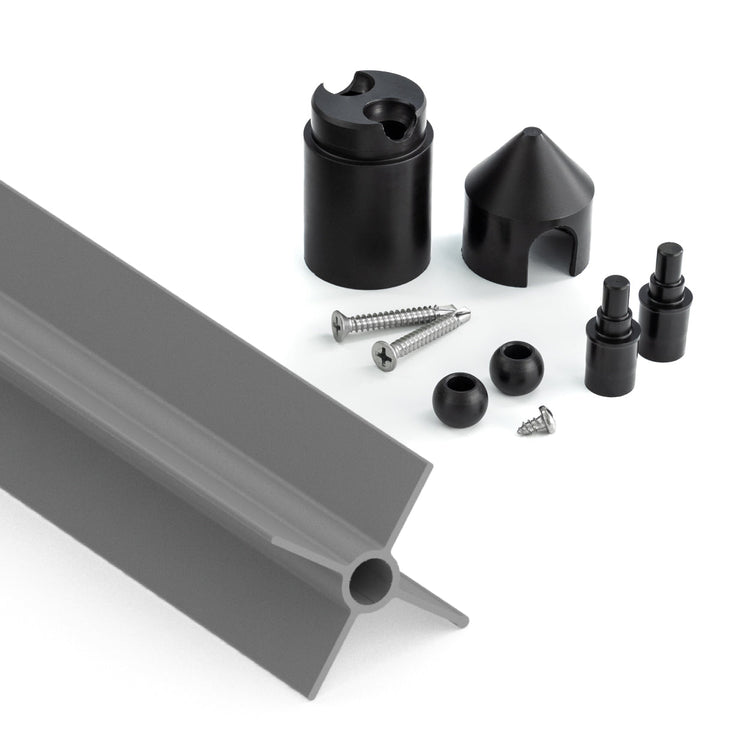

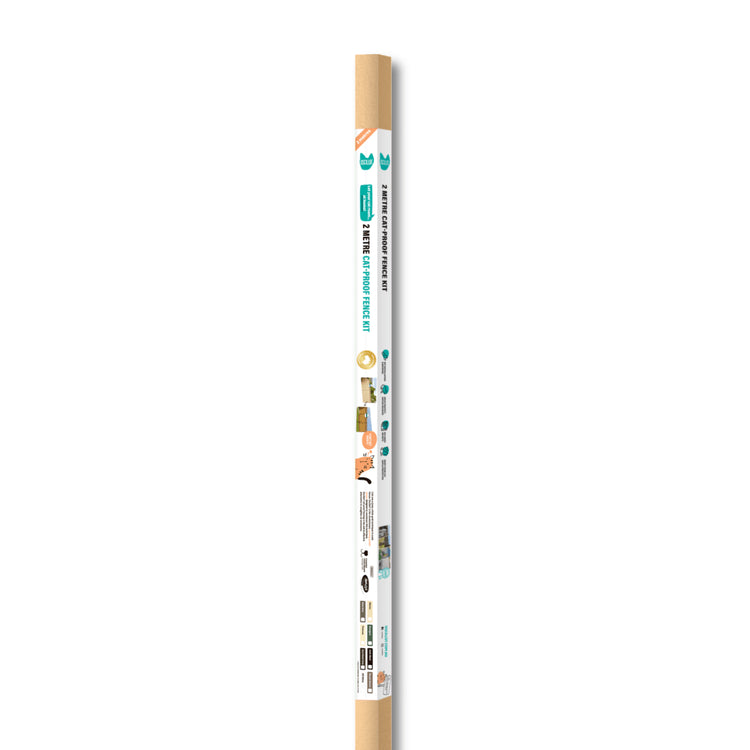

Leave a comment